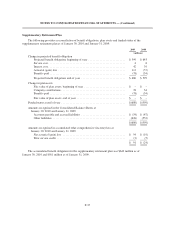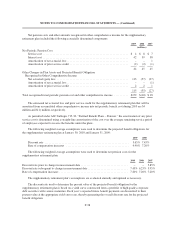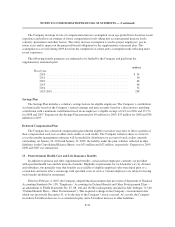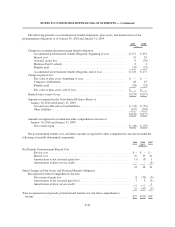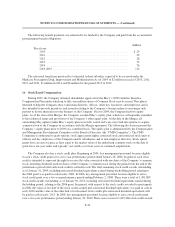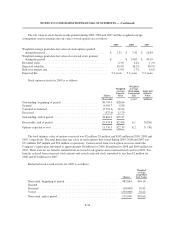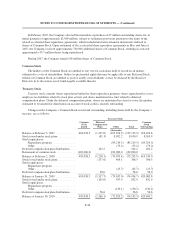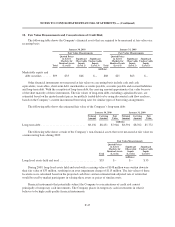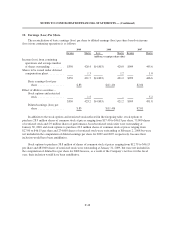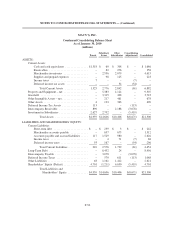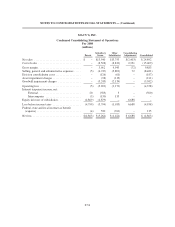Macy's 2009 Annual Report Download - page 95
Download and view the complete annual report
Please find page 95 of the 2009 Macy's annual report below. You can navigate through the pages in the report by either clicking on the pages listed below, or by using the keyword search tool below to find specific information within the annual report.
NOTES TO CONSOLIDATED FINANCIAL STATEMENTS — (Continued)
18. Fair Value Measurements and Concentrations of Credit Risk
The following table shows the Company’s financial assets that are required to be measured at fair value on a
recurring basis:
January 30, 2010 January 31, 2009
Total
Fair Value Measurements
Total
Fair Value Measurements
Quoted Prices
in Active
Markets for
Identical Assets
(Level 1)
Significant
Observable
Inputs
(Level 2)
Significant
Unobservable
Inputs
(Level 3)
Quoted Prices
in Active
Markets for
Identical Assets
(Level 1)
Significant
Observable
Inputs
(Level 2)
Significant
Unobservable
Inputs
(Level 3)
(millions)
Marketable equity and
debt securities ...... $99 $33 $66 $– $88 $25 $63 $–
Other financial instruments not measured at fair value on a recurring basis include cash and cash
equivalents, receivables, short-term debt, merchandise accounts payable, accounts payable and accrued liabilities
and long-term debt. With the exception of long-term debt, the carrying amount approximates fair value because
of the short maturity of these instruments. The fair values of long-term debt, excluding capitalized leases, are
estimated based on the quoted market prices for publicly traded debt or by using discounted cash flow analyses,
based on the Company’s current incremental borrowing rates for similar types of borrowing arrangements.
The following table shows the estimated fair value of the Company’s long-term debt:
January 30, 2010 January 31, 2009
Notional
Amount
Carrying
Amount
Fair
Value
Notional
Amount
Carrying
Amount
Fair
Value
(millions)
Long-term debt ............................... $8,156 $8,431 $7,946 $8,394 $8,702 $5,772
The following table shows certain of the Company’s non-financial assets that were measured at fair value on
a nonrecurring basis during 2009:
Total
Fair Value Measurements
Quoted Prices
in Active
Markets for
Identical Assets
(Level 1)
Significant
Observable
Inputs
(Level 2)
Significant
Unobservable
Inputs
(Level 3)
(millions)
Long-lived assets held and used .......................... $33 $– $– $33
During 2009, long-lived assets held and used with a carrying value of $148 million were written down to
their fair value of $33 million, resulting in an asset impairment charge of $115 million. The fair values of these
locations were calculated based on the projected cash flows and an estimated risk-adjusted rate of return that
would be used by market participants in valuing these assets or prices of similar assets.
Financial instruments that potentially subject the Company to concentrations of credit risk consist
principally of temporary cash investments. The Company places its temporary cash investments in what it
believes to be high credit quality financial instruments.
F-47


